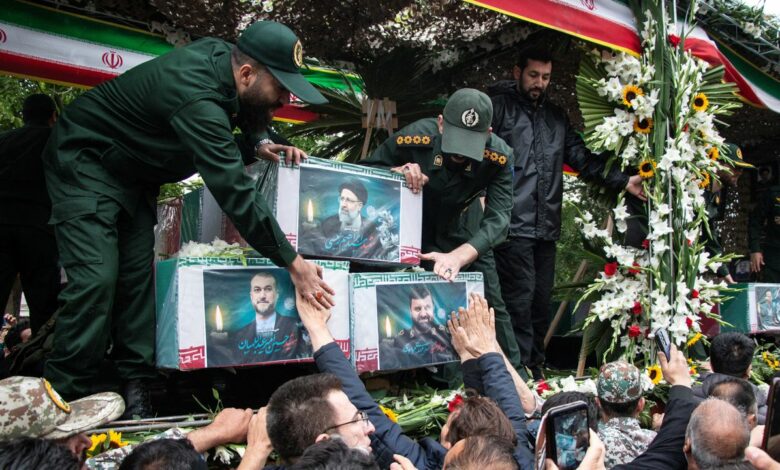
The body of President Ebrahim Raisi was being carefully carried from the crash site as former Foreign Minister Javad Zarif acidly told Iran’s state TV that, “One of the causes of this heart-breaking incident is the United States, which by sanctioning the sale of the aviation industry to Iran caused the martyrdom of the president and his companions. The US’s crime will be recorded in the minds of the Iranian people and history.” US officials quickly dismissed the allegations as “baseless.”
There are many reasons the aging American-made, Vietnam war-era Bell 212 helicopter may have crashed. Poor maintenance or human error in the dense fog are among them. Turkish Transport Minister Abdulkadir Uraloglu has said it is too soon to comment on the cause of the crash, but initial indications suggested it was an accident due to foggy weather.
But why did Iran risk both president and foreign minister on the same helicopter, when there were three used that day to carry the delegation to the dam opening on the border with Azerbaijan?
When Raisi – accompanied by his Foreign Minister Hossein Amir-Abdollahian, the provincial governor Malek Rahmati, and the influential Imam of Friday prayers in Tabriz, Mohammed Ali Alehashem – got out of the helicopter at the Qiz Ghal’e dam Sunday morning visibility was good.
The sun was shining as Raisi shook hands with his Azeri counterpart Ilham Aliyav at their border on the bridge over the calm waters of the Aras river in the middle of the dam. The day had got off to an apparently good start. Previously frosty relations between the two nations appeared to be warming.
On the route picked by the flight crew for their journey to the regional center of Tabriz, where the president’s plane was waiting, the weather was worsening.
Although seasonal rains had been diminishing another weather front was moving in. Cold and wet. Fog was thickening around the rugged, remote and unforgiving 1,800 meter (5,900 feet) peaks on the direct flight path.

So question one, why fly through the mountains when a detour around the range or to another destination might have been safer?
The next question might be, knowing the weather was bad and having three helicopters on the journey, why put both president and foreign minister in the same aircraft?
The crash, also revealed Iran’s lack of readiness to deal with a calamity of this nature.
There seemed to be no shortage of manpower, but they were hamstrung, lacking adequate technology.
In the middle of the night while hundreds, if not thousands, of medics, mountaineers, soldiers, police and even the elite Revolutionary Guard Corps, scoured the steep mountain peaks and deep ravines it was Turkish drone AKINCI, flying loops above the clouds, that first located traces of the helicopter.
For a nation that makes, uses, and exports long-range killer drones to countries like Russia for its war in Ukraine, and non-state actors like Iraqi militia and Yemen’s Houthis – who are currently holding global maritime trade to ransom targeting ships in the Red Sea – they didn’t appear to have a simple surveillance drone capable of the job.
Shortly before AKINCI began etching its systematic surveillance pattern in the night sky Iran had also asked Turkey and Russia for night vision capable helicopters. By implication, if they had them, they couldn’t get them there fast enough.
This night, of apparently vital importance to Iran and its Supreme Leader, Ayatollah Ali Khamenei, Iran’s military prowess – projected through its axis of proxies in the Middle East and its ally Russia – seemed hollow.
Former Foreign Minister Zarif would want the world to believe Iran’s technological core has been hollowed out by US sanctions, but that allegation too is tainted by hubris.
If, as he claims, the president’s helicopter were victim to a paucity of quality spare parts due to US sanctions, why risk the life of the president and the foreign minister in an aircraft considered potentially unreliable. What other air transport possibilities were there, and if there were none that begs the same question, doubly so.
Iran’s presidents are not idle, they need to go places. Planning for better options could have been made a bigger priority. Did hubris among the president’s staff or in the upper echelons of the military chose to trust to chance. According to Zarif, maintenance of the Bell 212 was a predictable problem.
It wouldn’t be the first time hubris hollowed out logic, but it is certainly the most tragic for those involved.
The implicit irony is that Raisi himself was an architect of Iran’s aura of power, only to find it was vacuous when he needed it most.




